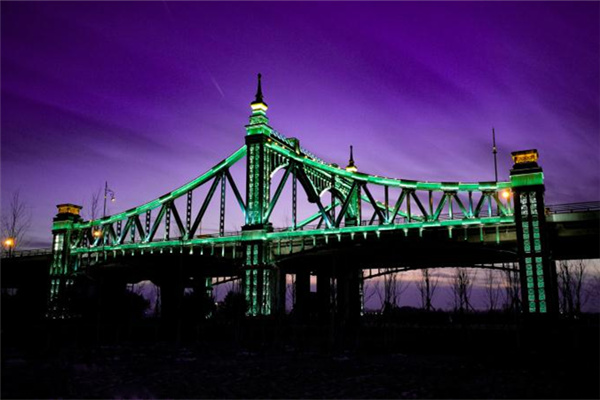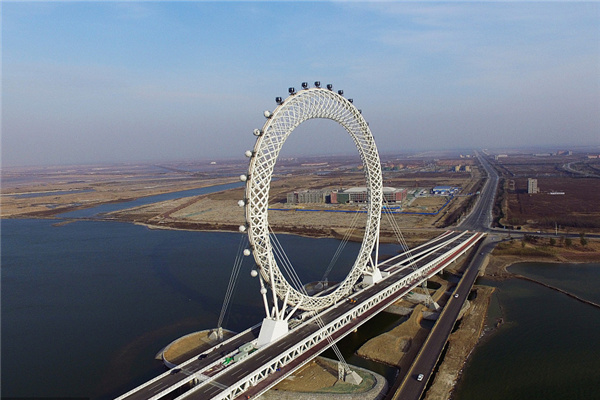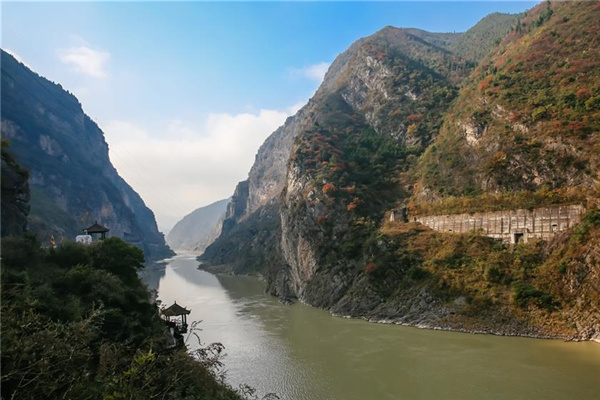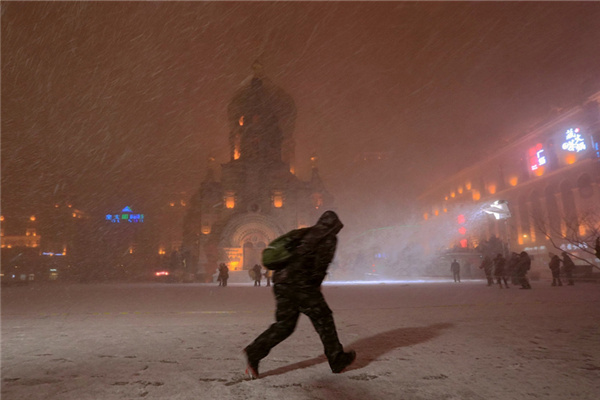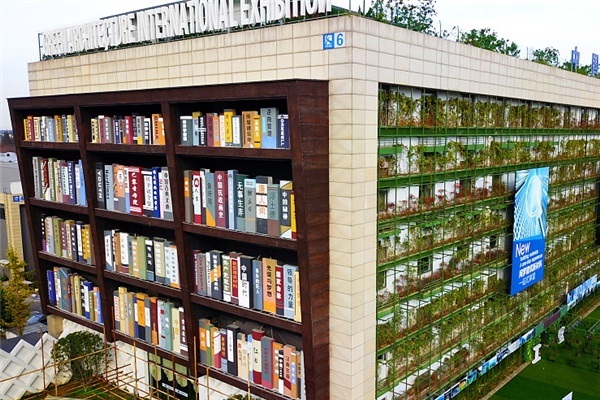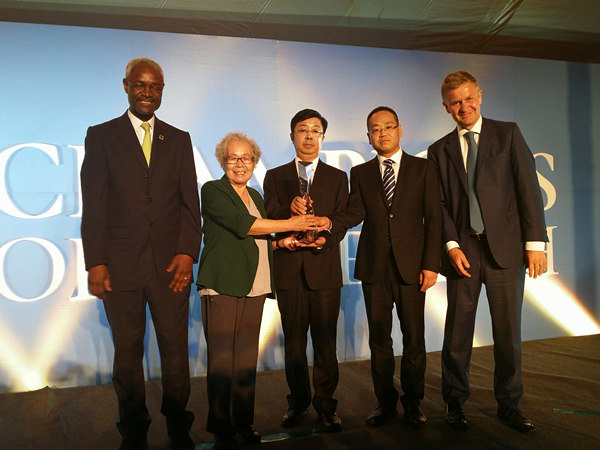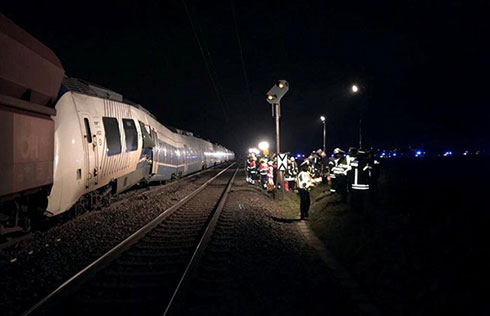

|
Zhu Hengjie (fourth from right), chairman of the Beijing HLLH High Science and Technology (Group) Co Ltd, and students from the Beichuan Middle School. Company photo |
Days after the devastating May 12 earthquake, a little boy, whose home was destroyed in Beichuan, Sichuan province, told the media that his dream was to have dinner with his parents in their own house on his birthday, June 25.
His dream didn't seem very realistic following a disaster that left tens of thousands of people homeless and staying in crude tents in makeshift resettlements. But, it did come true after his family moved into a new warm, quake-resistant home days ahead of his birthday.
Zhu Hengjie, chairman of the Beijing HLLH High Science and Technology (Group) Co Ltd is the man behind the company that made the boy's dream come true.
As a leader of an energy saving and environmental friendly buildings and construction materials manufacturer, Zhu usually carries a sample of the tile or wallboard with him to demonstrate his products to his clients.
With a powerful frame and kind smile, his slender fingers make him look like a painter, but his rough face also gives people an impression of a construction worker.
That's not off the mark as Zhu has been working in the construction industry for 20 years. "We're not only building houses, but also building homes with safety and comfort," he said.
But at Zhu's construction sites, there are no roaring cement mixers or tall cranes. Workers are busy assembling panels, steel bars and accessories together, like children piling up building blocks.
Soon, buildings rapidly take shape and the construction period is completed in one-sixth the time of a conventional building of the same size.
With no brick and mortar, the company builds houses with steel girders and columns and ASA panels made from compressed air and foam cement; 50 percent of the raw materials for the panels are from recycled industrial wastes.
The houses can reduce the use of 30 to 40 percent of steel and 50 percent of cement used in a traditional construction process. With thermal insulation, they can save as much as 80 percent more energy than conventional homes.
Good houses
The 1980s was the period when many Chinese people started their own businesses to pursue their personal fortunes. At that time people who did so were said to be "going to sea".
Zhu was one of them.
In 1986, Zhu quit his job at a State-owned enterprise and started his own business by setting up a house decoration "team" and employing some local farmers to decorate homes for clients. That was when he became interested in construction materials.
Zhu was living near Lishuiqiao, Beijing's Changping district where he saw workers digging sand and stones to make construction materials, and then transporting them to many of Beijing's construction sites.
They were being used to construct the numerous gorgeous buildings and mansions, many of which have become Beijing landmarks.
However, in places like Lishuiqiao, where the building materials came from, the land and vegetation were destroyed and clouds of dust and sand choked the local residents.
Finding a more environmentally friendly way to build homes and buildings was becoming a concern for many officials and people working in China's construction industry and Zhu was among them.
In 1988 Chinese officials first began promoting ideas to promote energy efficiency in the construction industry.
From then on, Zhu found his direction and quickened his pace. He turned his house decoration "team" into a factory and invited several experts in the construction materials and architecture fields to research eco-friendly construction.
Though their achievements were authorized by the government, there was a weak demand for their products because there were no compulsory policies to drive environmentally sound buildings in the construction industry.
"The mid-1990s was the toughest period for our company," Zhu said, "I was so disappointed seeing products piled up all around our campus.
"I didn't dare to go home during the Spring Festival in case creditors would come for payment," he said. "Due to a lack of cash, one of my partners withdrew his deposit behind his wife's back, to pay our staff's salaries."
To make things worse, Zhu's wife died of carbon monoxide poisoning in 1994 and he barely survived after a one-day ordeal.
"Because our old house was not insulated enough, we had to burn the coal-stove for winter heating," Zhu said. "It killed my wife."
Since then, Zhu was determined that "People should live more comfortably and safer. That is my responsibility as well as my career."
He traveled and did surveys in the United States, Japan and Germany "to see how to build houses in these developed countries and what kind of houses they are living in," Zhu said.
He said: "People doing business should usually go out and look around, then you will find how excellent or terrible your company or product is. Only then can you make a wise judgment."
Zhu discovered the idea of building houses like building blocks by producing the parts of the houses in factories, and assembling them at the housing site.
Based on their ASA panels, light steel structures and the ASA mosaic panel building system was fireproofed, and made seismic and hurricane resistant.
In 2001, Zhu officially set up the Beijing HLLH High Science and Technology (Group) Co Ltd, and settled at Beijing's Changping Scientific and Technological Park Xiaotangshan Industrial Development Zone.
Zhu and his colleagues have since built homes in many natural disaster-stricken regions, including Indonesia, the US and China's Sichuan province.
Homes and hopes
The horrific earthquake in Sichuan province destroyed numerous people's homes. Although the victims received billions in donations from people around the world, Zhu said he was still worried about them as many were still camping in the open.
"As a leader of a construction business, I thought we're responsible for building homes for these victims as soon as possible," Zhu said.
Zhu went to the disaster-stricken areas just days after the earthquake. Holding back his tears, he walked on the ruins and picked up some pieces of debris, gingerly packing them in his handkerchief.
He took them back Beijing, and started working in his laboratory where he and his colleagues researched components of the debris. Then, they conceived solutions to use the debris and construction garbage as raw material for making new building materials.
Soon after, the company decided to donate 100 seismic resistant and energy saving buildings, worth more than 5 million yuan, to the earthquake-hit regions, including some classrooms for Beichuan Middle School, one of the worst hit sites in the May catastrophe.
With a construction area of 40 sq m, each family home has one bedroom, one living room, a kitchen and a toilet, at can be used for at least 30 years.
"They're not just shelters, we'd like to build homes which can provide people with warmth, comfort and safety." Zhu said, "And also, it would be a big waste if we wanted to build homes as soon as possible by building some temporary houses and destroying them later to build permanent ones."
The houses they built can withstand a 9-magnitude earthquake, he said. "I'm striving to fulfill my promise to build houses that won't collapse on our children."
Beginning May 20, more than 400 employees of Zhu's company were divided into three shifts and started working at the building sites 24 hours a day. They finished constructing 86 houses in just 10 days.
Now, they are also cooperating with local building material factories and are planning to set up another factory to further recycle the regions' construction garbage and produce more construction materials for the reconstruction.
United Nations' officials have also noted Zhu's structures in Sichuan and elsewhere around the world, he said.
"(The houses') anti-quake and eco-friendly characteristics drew the attention of some United Nations' officials," he said proudly, "Then they decided to purchase our products and we sent professionals to guide their construction."
In 2004, the company built 50,000 such houses in Thailand and 10,000 in Sri Lanka after the December 2003 Indian Ocean Tsunami, and 100 houses were built in the US after Hurricane Katrina devastated New Orleans in 2005.
"We also built houses in Russia and Saudi Arabia where they stood the test of 60 below zero and 50 respectively," Zhu said.
On average, about 2 billion sq m of new buildings are built each year in China. "So, we still bear a great responsibility," he said.
|
The houses built by Beijing HLLH High Science and Technology (Group) Co Ltd at earthquake-hit Sichuan province, can withstand 9-magnitude earthquake. Company photo |
(China Daily 02/09/2009 page12)
